
The inhabitants of the asphalt-glass jungle every year more and more need the opportunity to breathe fresh air. But, unfortunately, finding the source of this air is also becoming increasingly difficult: there is simply not enough space for gardens and parks. And the lack of free space does its job. Landscape designers found a way out of this situation and offered to green the roofs of buildings.
Thanks to modern technologies, green roofs have become widespread and original design. Let’s see what a roof garden is and what it can be like.
What are green roofs?
“Green roofs” means that the roof is partially or completely filled with living plants. These can be either plants in containers or tubs, or planted in the ground. Today, such landscaping is more common in megacities: on the roofs of shopping centers, office buildings, and residential skyscrapers. Not so long ago, the roofs of country houses and outbuildings began to turn green.
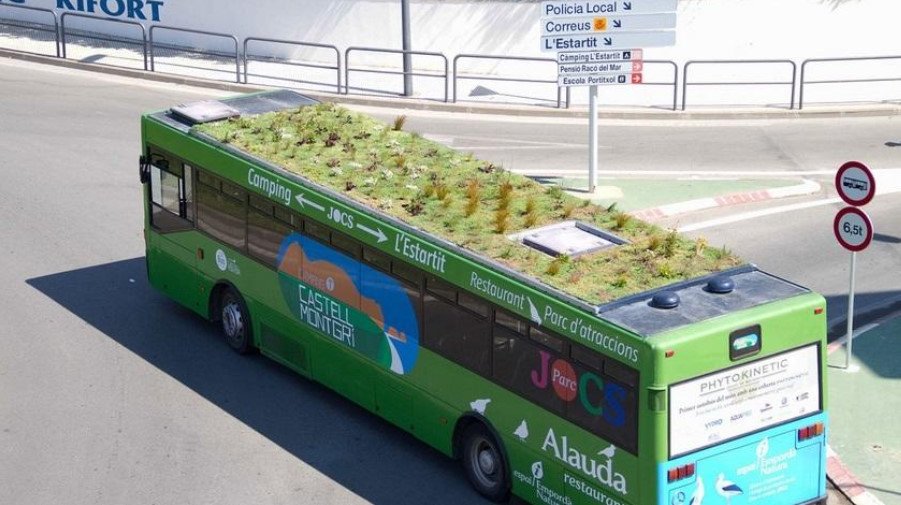
Interesting: green buses run through the streets of New York, Madrid, Barcelona, Girona. As you probably guessed, with roof gardens. Mark Granen, who developed this idea, set a goal not only to give the bus an interesting look that will be remembered by tourists, but also to expand the urban green area.
Types of green roofs
There are several ways to green roofs. In this regard, there are the following types of their design with the help of plants:
Green roofs
These are the roofs of buildings that are allowed to operate, on which only a lawn covering is equipped.
Roof garden
These are the roofs of buildings that, in addition to the lawn, are divided into real mini-gardens with paths, trees and shrubs, flower beds and recreation areas. They, in turn, are of two types:
1. Extensive
The simplest version of the placement. Extensive gardens involve the planting of unpretentious plants-usually evergreens. The thickness of the soil is small-a maximum of 15 cm (5.9 in). Additional strengthening of the roof is not required, since the weight of the soil does not exceed 20 kg per square meter.
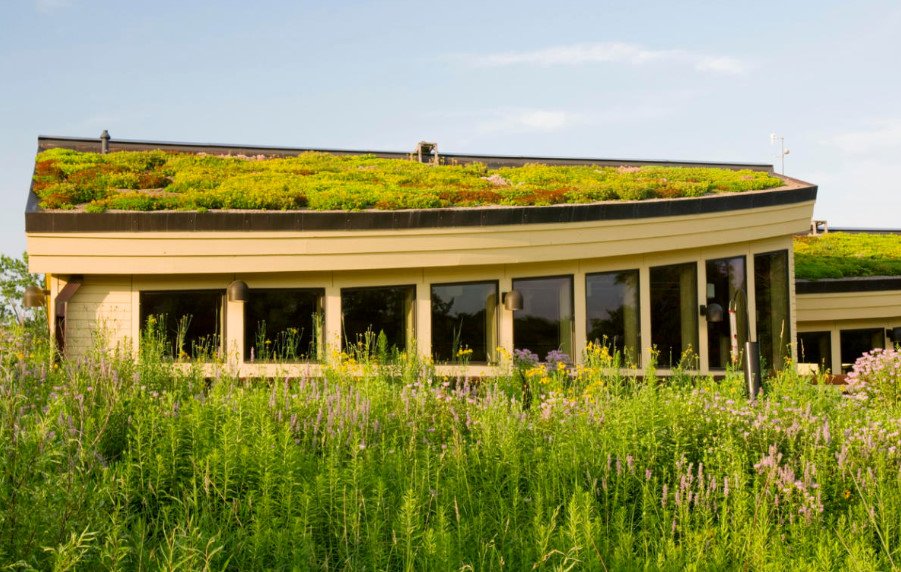
Another option for extensive landscaping is to take out plants in tubs on the roof. It is suitable for country houses, outbuildings, garages, but only for flat roofs and only for the spring and summer season. In winter, the containers will have to be cleaned. In general, containers, even placed in perfect order, can not be called a full-fledged garden.
2. Intensive
This is a real garden. You can arrange paths, places for recreation, gazebos, fountains, mini-waterfalls, small ponds. The plant can also be anything from flowers to trees.
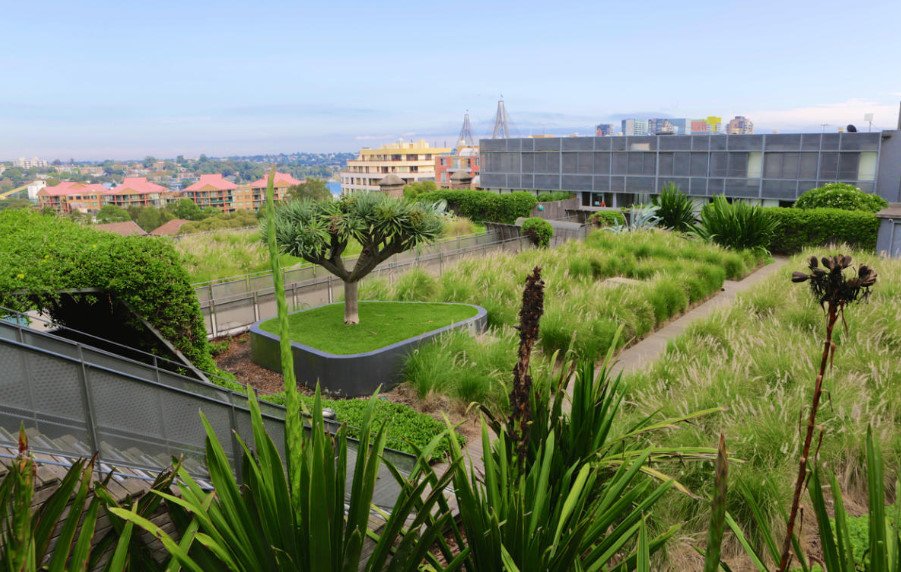
This type of garden is often created on the roofs of high-rise buildings, hotels, shopping centers, and other large-scale objects. This fact is easily explained by the fact that the roof of a country house simply can not withstand such a large load from the soil layer up to 200 cm (6.6 ft) and additional buildings.
Flat landscaping
As you can already guess, in this case we are talking about flat roofs. They can be limited to landscaping alone, and you can lay out any of the gardens given the strength of the roof.
Pitched landscaping
The basis for this type of landscape design is a pitched roof. In the extended version, there is a flight of fancy, limited to a lawn or garden.
Advantages of green roofs
- Improving the ecology of the building and the area around it: green spaces purify the air, retaining about 20% of harmful impurities.
- Increase the level of sound insulation. Especially important for buildings located near highways, airports, and other noise sources.
- Increasing the level of thermal insulation: the green roof well regulates the heat exchange processes of the building with the environment. In winter, the heat is delayed, and in summer, the house is pleasantly cool.
- Additional space for recreation and additional space for implementing gardening ideas.
- Increase the service life of the roof. Plants and soil to some extent protect the roof from the effects of negative factors: moisture, snow, sunlight, etc.
- Protection from snow blockages and floods. Plants in this case take the brunt and partially hold up snow dumps and rainwater.
- The aesthetic component. Landscape design is an original, always memorable roof design.
As in any direction of landscape design, green roofs have advantages and disadvantages, along with advantages and disadvantages.
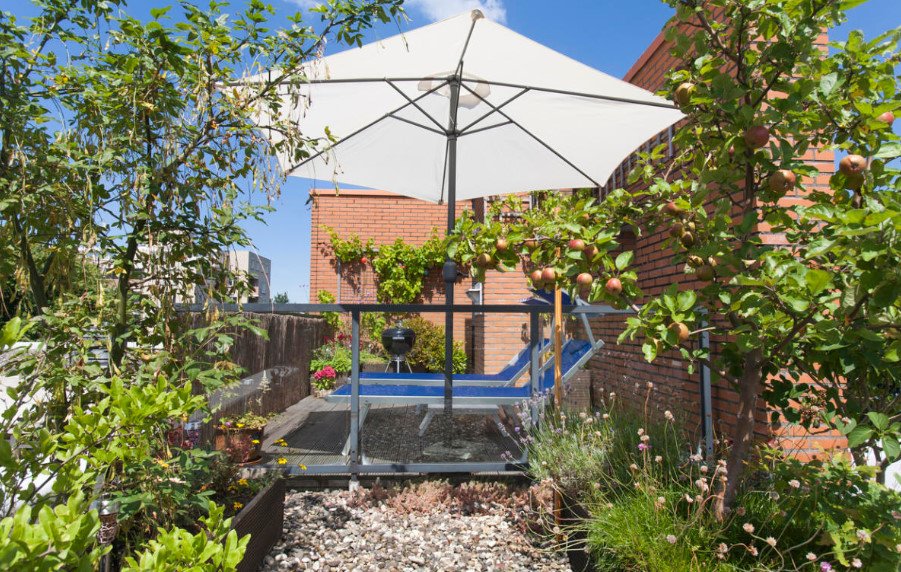
Disadvantages of green roofs
- Significant expenses. You will have to pay for the roof and its covering. You will also have to spend money on an automatic watering system, because watering the roof manually is not very convenient.
- The need to comply with safety regulations.
- Careful selection of plants and care for them. Not every plant is able to grow in such conditions and please with its appearance.
- Green roofs are not suitable for every plot design.
Despite all the “pros” and “cons”, the green roof is a really interesting project, and it is interesting not only for its result, but also for the process of creation. What do you think about this?

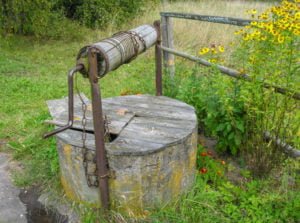
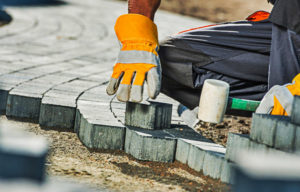

Leave a Reply